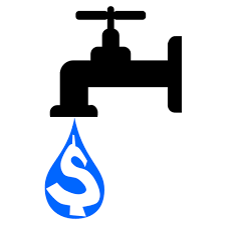UCLA Clinic Submits Amicus Brief in Water Rate Design Case
A trial court decision invalidated the City of San Diego’s tiered water rates. This amicus brief by the Environmental Law Clinic on behalf of California Coastkeeper Alliance and Los Angeles Waterkeeper argues a reversal is needed to pursue conservation and equity.

Court challenges to the use of tiered water rates in California are threatening the state’s own water conservation and affordability goals. That’s what’s at stake in a case called Patz v. City of San Diego.
Climate change is intensifying California’s hydrologic variability and exacerbating the state’s water supply challenges. Dwindling water supplies have led to a substantial increase in the retail cost of water over the last decade. Drought-induced water shortages force water agencies to invest in additional supplies or enact expensive emergency measures. These costs are often passed on to households through increased rates and surcharges and fall disproportionately on low-income Californians, many of whom have seen their incomes stagnate. Meanwhile, high-income households generally consume more water than low-income households. In light of California’s current and future water supply and affordability challenges, water agencies need to make use of all available conservation strategies to meet demand and to improve equity in water rates.
One important tool for agencies to advance conservation and equity is tiered water rates, by which agencies impose progressively higher prices for water service as water consumption increases. These rate structures charge users according to the strain they impose on the agency’s water system. Thus, they ensure that the marginal costs of investing in additional infrastructure and securing expanded water supplies properly fall to those who create the demand for that additional investment and supply, rather than to the system’s most modest water users. However, tiered water rates throughout the state have been and continue to be challenged under Proposition 218, a California constitutional amendment passed in 1996. Many of these challenges rely on the California Fourth District Court of Appeal’s narrow interpretation of Proposition 218 in its 2015 Capistrano Taxpayers Association v. City of San Juan Capistrano decision, which is the leading case on the constitutionality of tiered water rates. The court struck down the City of San Juan Capistrano’s tiered rates because the agency made no effort “to correlate the incremental cost of providing service at the various incremental tier levels to the prices of water at those levels.” The Capistrano court’s interpretation is contrary to other appellate court decisions that preceded it, and these disparate opinions have caused confusion among water agencies seeking to design tiered rates.

One of these Proposition 218 challenges was brought in Patz v. City of San Diego, a class action contesting the City of San Diego’s (the City’s) use of tiered rates for its Single-Family Residential (SFR) customer class. The Petitioners argued that the City’s 2013 and 2015 rate methodology for the SFR class violated the requirement of Proposition 218 that rates charged to any parcel be proportional to the cost of providing service to that parcel. The San Diego Superior Court sided with the Petitioners, holding that the City “failed to demonstrate by substantial evidence that its [tiered rates] are proportional to the cost of service attributable to each customer’s parcel[.]” The City appealed the trial court’s ruling, and the case is now before the Fourth Appellate District of the California Court of Appeal.
Last month, the UCLA Environmental Law Clinic submitted an amicus brief to the court on behalf of California Coastkeeper Alliance and Los Angeles Waterkeeper—organizational experts in California water management and environmental protection. In our brief, we provide context on California’s water scarcity challenges and on the state’s conservation and affordability goals. We also “explain how tiered rates work to advance the state’s conservation goals; promote equity and affordability; and accurately reflect the cost of providing water service to individual users by imposing higher rates on users who are most responsible for increased capital expenditures,” in accordance with Proposition 218. Lastly, we contend that the trial court adopted an unlawfully narrow interpretation of Proposition 218, and upholding the trial court’s decision would undercut the important and widespread equitable water rate design practices throughout the state.
There will still be some time until the court comes to a decision on the matter. An ideal outcome would recognize Proposition 218 as consistent with California’s longstanding requirements to conserve water supplies and goal of safeguarding “safe, clean, affordable, and accessible water” for all residents. And as a result, agencies would be afforded greater flexibility to set rates that advance these objectives. A worst-case scenario, on the other hand, would be an interpretation of Proposition 218 that unduly constrains local governments’ ability to prioritize conservation and equity by imposing an infeasibly high burden on water providers defending their rate structures. Guidance on these issues by the California Supreme Court would provide the ultimate clarity.
Reader Comments
4 Replies to “UCLA Clinic Submits Amicus Brief in Water Rate Design Case”
Comments are closed.







Why are power companies allowed to set tiered rates? It seems like an easy comparison to do the same with water utilities.
Just like a flat tax rate, a flat rate for water is a regressive form of taxation that disproportionately affects those with less income.
Thank you for your work in fighting for more equitable water rate structures.
Although I wouldn’t say my mind is closed on this topic, I must say that I do not like to see systems like tiered rates.
More and more, we as a society seem to be trying to pit groups of people against each other, and I for one think this is actually quite harmful in the aggregate, and over time. Calling this practice “equitable” is not a good excuse.
To me it seems better to have one low, (subsidized – of course! – for *everyone* due to water being owned by the public here) rate for water.
Using tiered rates is not the only way to get people to conserve water. I think guilt probably works just as well. (Although it does not help when officials try to build new housing at the same time. That destroys credibility.)
Every person who doesn’t live under a rock already knows not to waste water.
Using financial penalties to bully people is neoliberal and it is so 20-teens. Let’s stop it already. Treat people like grown-ups. We can still penalize actual violators, ffs.
From the cheap seats!: isn’t a water rate a “fee” and not a tax? (But don’t use any big words – I’ve forgotten a lot of that stuff.)
Btw, you know who “creates demand?”
New people, that’s who.
You can see the ugly places this could all go.
Let’s not.